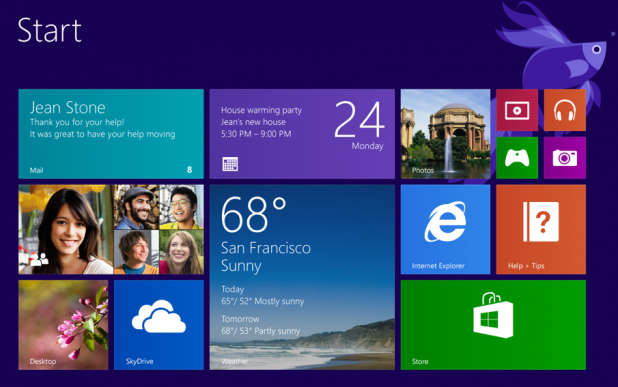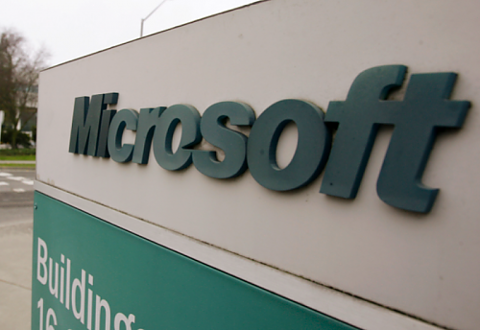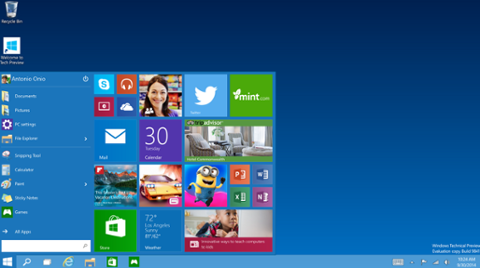[caption id="attachment_17451" align="aligncenter" width="618"]

Windows 8.1.[/caption] Windows 8 was designed to separate casual and power users in a way that ultimately benefitted both, according to a Microsoft UX designer
commenting on Reddit. Various tech publications identified the designer, who goes by the Reddit handle “pwnies,” as
Jacob Miller; in one Reddit posting, he offered a Microsoft.com email address as proof of his authenticity. When Slashdot reached out to that address, in order to ask whether Microsoft had reacted to the postings, Miller responded: “Haven't heard anything yet, but I'm currently in southeast asia on vacation, so I'm somewhat separated from HQ right now.” (Microsoft has traditionally clamped down on employees attempting to speak outside the bounds of the company’s massive PR apparatus—to the point where even higher-ranking executives are anxious about discussing internal issues off-the-record—which makes the Reddit thread that much more surprising.) Miller took to Reddit Jan. 14 to discuss why Microsoft decided to split Windows 8 into two interconnected parts: a Start screen of colorful tiles linked to applications, and the more traditional desktop. It supposedly all comes down to casual users who rely on Windows to stream videos, look at cat pictures on the Internet, and maybe post something short to Facebook or another social network—and who don’t need, or even want to understand, some of the more advanced features beloved by power users. Because Microsoft wanted Windows to appeal to as massive an audience as possible, Miller added, the company’s engineers and designers needed to pare down or eliminate many advanced features, lest they alienate the casual users:
“A great example is multiple desktops. This has been something that power users have been asking for for over a decade now. OSX has it, Linux has it, even OS/2 Warp has it. But Windows doesn't. The reason for this is because every time we try and add it to the desktop, we run user tests; and every time we find that the casual users—a much larger part of our demographic than Apple's or Linux's—get confused by it. So the proposal gets cut and power users suffer.”
So rather than continuing to modify the desktop in a futile attempt to serve both power users and casual ones, Microsoft decided to chop Windows in two. But why make the Start screen the default? Miller had a response to that, as well:
“The short answer is because casual users don't go exploring. If we made desktop the default as it has always been, and included a nice little start menu that felt like home, the casual users would never have migrated to their land of milk and honey. They would still occupy the desktop just as they always had, and we would have been stuck in square one. So we forced it upon them. We drove them to it with goads in their sides. In 8.1, we softened the points on the goads by giving users an option to boot directly to desktop.”
Now that casual users are aware of this “new pasture,” Microsoft can (in theory) begin tailoring the respective interfaces to meet the needs of everyone who relies on Windows. “Right now we still have a lot of work to do on making Metro seem tasty for those casual users, and that's going to divert our attention for a while,” he concluded. “But once it's purring along smoothly, we'll start making the desktop more advanced.” For the moment, however, Microsoft’s customers have responded anemically to Windows 8. The operating system sold 200 million copies in its first 15 months of release—an impressive number, until you consider that it took Windows 7 a mere 12 months to blast past 240 million licenses sold. Consumers haven’t expressed overwhelming enthusiasm for the Start screen’s colorful tiles, and Windows 8 tablets haven’t managed to crack the duopoly of Google Android and Apple iOS.
Image: Microsoft  Windows 8.1.[/caption] Windows 8 was designed to separate casual and power users in a way that ultimately benefitted both, according to a Microsoft UX designer commenting on Reddit. Various tech publications identified the designer, who goes by the Reddit handle “pwnies,” as Jacob Miller; in one Reddit posting, he offered a Microsoft.com email address as proof of his authenticity. When Slashdot reached out to that address, in order to ask whether Microsoft had reacted to the postings, Miller responded: “Haven't heard anything yet, but I'm currently in southeast asia on vacation, so I'm somewhat separated from HQ right now.” (Microsoft has traditionally clamped down on employees attempting to speak outside the bounds of the company’s massive PR apparatus—to the point where even higher-ranking executives are anxious about discussing internal issues off-the-record—which makes the Reddit thread that much more surprising.) Miller took to Reddit Jan. 14 to discuss why Microsoft decided to split Windows 8 into two interconnected parts: a Start screen of colorful tiles linked to applications, and the more traditional desktop. It supposedly all comes down to casual users who rely on Windows to stream videos, look at cat pictures on the Internet, and maybe post something short to Facebook or another social network—and who don’t need, or even want to understand, some of the more advanced features beloved by power users. Because Microsoft wanted Windows to appeal to as massive an audience as possible, Miller added, the company’s engineers and designers needed to pare down or eliminate many advanced features, lest they alienate the casual users:
Windows 8.1.[/caption] Windows 8 was designed to separate casual and power users in a way that ultimately benefitted both, according to a Microsoft UX designer commenting on Reddit. Various tech publications identified the designer, who goes by the Reddit handle “pwnies,” as Jacob Miller; in one Reddit posting, he offered a Microsoft.com email address as proof of his authenticity. When Slashdot reached out to that address, in order to ask whether Microsoft had reacted to the postings, Miller responded: “Haven't heard anything yet, but I'm currently in southeast asia on vacation, so I'm somewhat separated from HQ right now.” (Microsoft has traditionally clamped down on employees attempting to speak outside the bounds of the company’s massive PR apparatus—to the point where even higher-ranking executives are anxious about discussing internal issues off-the-record—which makes the Reddit thread that much more surprising.) Miller took to Reddit Jan. 14 to discuss why Microsoft decided to split Windows 8 into two interconnected parts: a Start screen of colorful tiles linked to applications, and the more traditional desktop. It supposedly all comes down to casual users who rely on Windows to stream videos, look at cat pictures on the Internet, and maybe post something short to Facebook or another social network—and who don’t need, or even want to understand, some of the more advanced features beloved by power users. Because Microsoft wanted Windows to appeal to as massive an audience as possible, Miller added, the company’s engineers and designers needed to pare down or eliminate many advanced features, lest they alienate the casual users:


